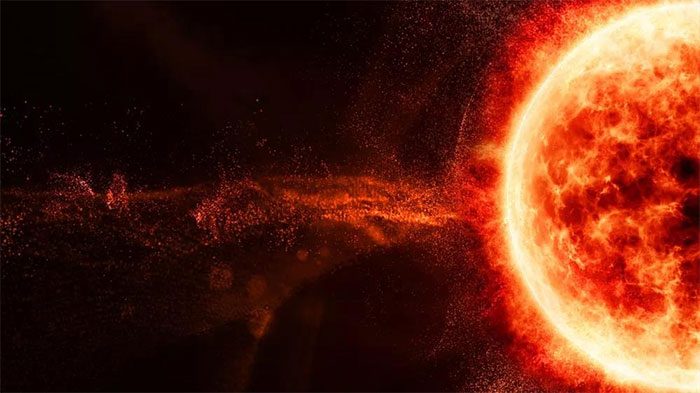High-speed, energetic winds from a hole in the Sun’s atmosphere are set to collide with Earth’s magnetic field on August 3rd.
This information was provided by forecasters from the Space Weather Prediction Center (SWPC) under the National Oceanic and Atmospheric Administration (NOAA). They noted that a significant outflow of gas is emanating from a hole located in the southern region of the Sun’s atmosphere.

Graphic illustrating how the Sun launches storms towards Earth – (Image: LIVE SCIENCE).
These coronal holes in the upper atmosphere of the Sun are areas where the star’s plasma is cooler and less dense, as explained by Live Science. In these holes, instead of the Sun’s magnetic field lines looping back to the star, they are “blown out,” directed straight into space.
One such hole is currently pointed directly at Earth.
Fortunately, the forecast indicates that the solar storm (geomagnetic storm) expected to hit on August 3rd is only a weak G1 storm.
Typically, you would not feel these types of cosmic storms; however, they can still affect power grids, radio systems, navigation, and even migratory birds—essentially anything that relies on the planet’s magnetic field. Geomagnetic storms can cause shortwave radio blackouts in some areas around the world.
The high-energy particles from the cosmic storm can also “drip” down magnetic field lines near the planet’s poles, exciting molecules in the atmosphere and releasing energy in the form of light to create auroras, which are most commonly seen in regions close to the North Pole.
The geomagnetic storm on August 3rd is forecasted to cause minor fluctuations in the power grid and affect some satellite functions, leading to slight disruptions in applications on mobile devices, including GPS navigation.
Auroras may also be visible at relatively low latitudes, such as southern Michigan in the United States.
A strong geomagnetic storm could have more severe consequences, potentially even enough to push satellites being launched back towards Earth.


















































